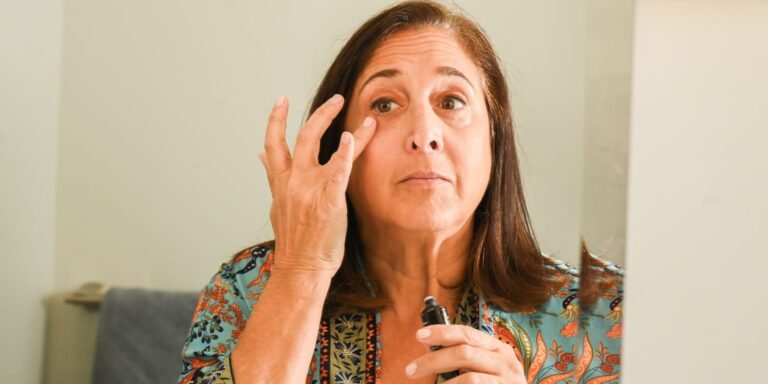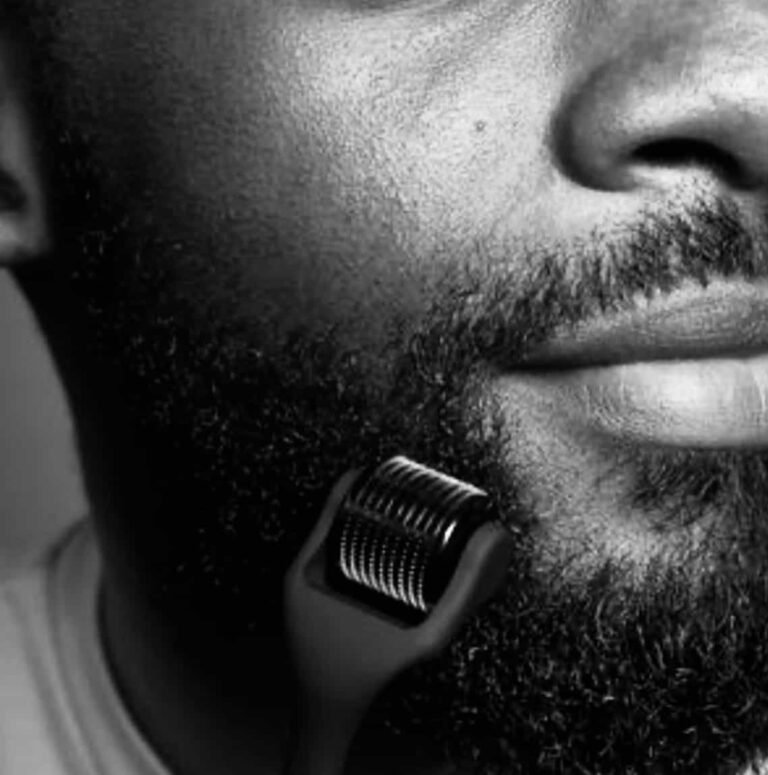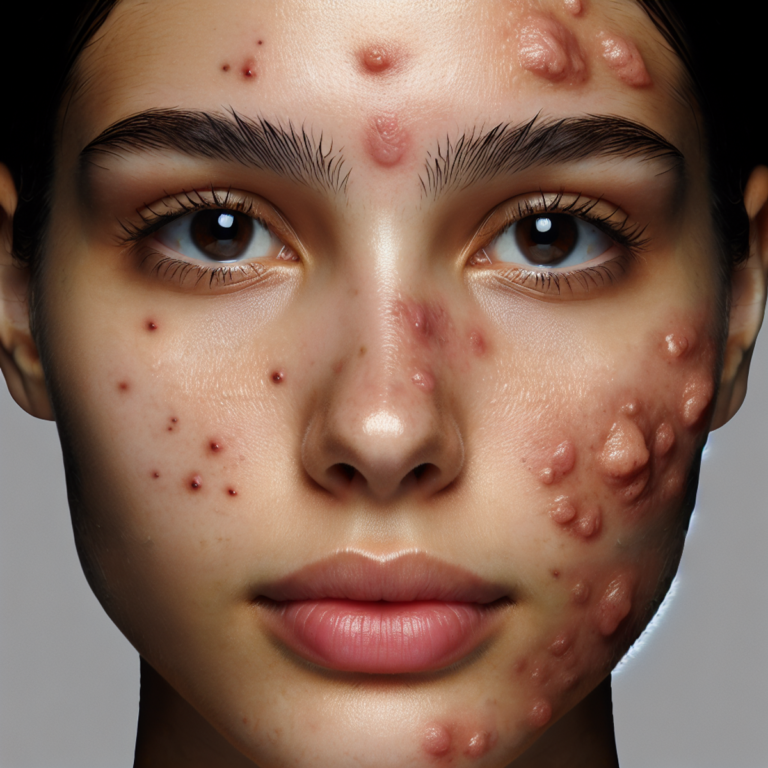How to Remove Acrylics at Home Without Damaging Your Nails

Introduction
When it’s time to say goodbye to your acrylic nails, it’s important to remove them properly to avoid any damage to your natural nails. In this article, we’ll guide you on how to remove acrylics at home without causing harm to your nails. We’ll explore different methods and provide step-by-step instructions for each.
Removing acrylics can be a daunting task, but with the right techniques and tools, you can safely and effectively take off those artificial nails in the comfort of your own home. By following these methods, you can maintain the health and strength of your natural nails while achieving a clean removal.
In the next section, we will discuss why proper removal is essential for acrylic nails and the potential damage caused by improper removal. Understanding these factors will emphasize the importance of following the correct removal methods.
Understanding Acrylic Nails and Why Proper Removal is Essential
Acrylic nails have become a popular choice for individuals who desire long, strong, and beautifully manicured nails. They are artificial nail enhancements that are applied over the natural nails to create length, shape, and durability. However, it is important to understand the potential damage that can occur if they are not removed properly.
Explanation of What Acrylic Nails Are
Acrylic nails are made from a combination of liquid monomer and powdered polymer that creates a durable and long-lasting nail enhancement. The liquid monomer is mixed with the powdered polymer to form a paste-like substance that is applied to the natural nails and sculpted into the desired shape. Once the acrylic has hardened, it creates a strong and protective layer over the natural nails.
Potential Damage Caused by Improper Removal
Improper removal of acrylic nails can lead to significant damage to the natural nails. Some of the potential risks include:
- Nail thinning: Aggressive filing or scraping during removal can cause thinning of the natural nails, making them weak and prone to breakage.
- Nail bed damage: If the acrylic is forcefully peeled off or pried, it can cause damage to the delicate nail bed, leading to pain, redness, and even infection.
- Nail splitting: Removing acrylics incorrectly can cause the natural nails to split or peel, resulting in uneven nail surfaces and an unappealing appearance.
- Nail dehydration: The removal process often involves using drying agents such as acetone, which can strip the nails of their natural oils and moisture, leaving them dry and brittle.
Different Types of Acrylic Nail Application
There are different methods for applying acrylic nails, each with its own unique characteristics:
- Tips with acrylic overlay: This method involves attaching plastic tips to the natural nails and then applying acrylic over them to create length and strength.
- Sculptured acrylic nails: With this technique, the acrylic is applied directly onto the natural nails without the use of tips, allowing for a more customized and natural-looking result.
- Acrylic dip powder: This newer method involves dipping the natural nails into a colored powder that is then sealed with a clear acrylic liquid. It provides a durable and long-lasting manicure.
Common Reasons for Removing Acrylics
There are several reasons why individuals may choose to remove their acrylic nails:
- Nail maintenance: Over time, as the natural nails grow, a gap starts to form between the cuticle and the acrylic nail. This can cause discomfort and may make it necessary to remove the acrylics.
- Nail damage or breakage: If an acrylic nail becomes damaged or breaks, it may need to be removed and replaced with a new one.
- Desire for a change: Some people simply want to switch up their look or try different nail styles, which requires removing the existing acrylics.
Understanding these aspects of acrylic nails and the importance of proper removal sets the stage for exploring different techniques for safe and effective removal. In the following sections, we will delve into three popular methods: the acetone soak method, acetone-free removal method, and quick removal using floss.
Remember, taking the time to remove your acrylic nails properly will help maintain the health and strength of your natural nails in the long run.
1. Acetone Soak Method
The acetone soak method is one of the most popular and effective ways to remove acrylic nails at home. It involves soaking your nails in acetone to soften the acrylic, making it easier to remove. Here is an in-depth guide on how to use the acetone soak method for safe and successful acrylic removal:
Gather the necessary supplies:
- Acetone: Look for pure acetone, as it is more effective in breaking down the acrylic.
- Cotton balls or pads: These will be used to apply the acetone to your nails.
- Aluminum foil: Cut small squares of aluminum foil that are large enough to wrap around each nail.
- Nail file and buffer: You may need these tools to gently buff away any remaining acrylic after soaking.
Prepare your nails:
- Use a nail clipper to trim your acrylic nails as short as possible without cutting into your natural nails.
- Gently file the surface of each nail to remove the shiny top layer of the acrylic, which will help the acetone penetrate better.
Soak your nails:
- Take a cotton ball or pad and saturate it with acetone.
- Place the saturated cotton ball on top of your nail, ensuring it covers the entire nail.
- Wrap each finger with aluminum foil to hold the cotton ball in place and create a seal.
- Repeat this process for all your fingers.
Wait for the acetone to work:
- Allow your nails to soak in acetone for about 15-20 minutes. You can use this time to relax or do other activities.
Check if the acrylic is ready for removal:
- After soaking, carefully remove one of the foils and check if the acrylic has become soft and loosened. If it hasn’t, re-wrap and continue soaking for a few more minutes.
Remove the acrylic:
- Gently push the softened acrylic off your nail using an orange stick or cuticle pusher. Be careful not to apply too much pressure to avoid damaging your natural nails.
- If any acrylic remains on your nails, you can use a buffer to gently buff it away.
Hydrate and care for your nails:
- After removing the acrylic, wash your hands thoroughly to remove any lingering acetone.
- Apply a nourishing cuticle oil or moisturizer to hydrate and replenish your nails and cuticles.
Remember, the acetone soak method may require some patience as it takes time for the acetone to break down the acrylic. If you experience any discomfort or irritation during the process, remove the foils immediately and consult a professional.
Using this method correctly can help you safely remove acrylic nails at home without causing damage to your natural nails. However, keep in mind that repeated or improper removal of acrylics can weaken your natural nails over time. It’s important to give your nails a break between applications and follow proper nail care practices to maintain their health and strength.
In case you’re wondering how to take off acrylic nails when your real nail has ripped, refer to this helpful resource on [Qu
2. Acetone-Free Removal Method
Acetone-free removal is a gentle method to remove acrylic nails without using acetone, which can be harsh on the natural nails. This method involves a few steps to ensure safe and effective removal.
Preparation
Start by gathering the necessary tools:
- Nail clippers
- Nail file
- Bowl of warm soapy water
- Cuticle oil
- Acetone-free nail polish remover
Step-by-Step Process
- Clipping Nails Short: Use nail clippers to trim the acrylic nails as short as possible without cutting into the natural nails. This step reduces the thickness of the acrylics for easier removal.
- Lifting Edges: Gently lift the edges of the acrylic nails using a cuticle stick or an orangewood stick. Be cautious to avoid applying too much pressure to prevent damage to the natural nails.
- Soaking in Acetone-Free Nail Polish Remover: Submerge your nails in an acetone-free nail polish remover for about 30 minutes. This will help soften the acrylic nails, making them easier to peel off.
- Peeling Off Acrylics: After soaking, you should be able to gently peel off the softened acrylics with minimal resistance. If there are stubborn areas, repeat the soaking process until the remaining acrylic comes off easily.
- Post-Removal Care: Once all the acrylics are removed, use a nail buffer to smooth out any roughness on the natural nails. Apply cuticle oil and massage it into the nails and surrounding skin to replenish moisture.
This method provides a gentler alternative to acetone-based removal, reducing the risk of damage to your natural nails while effectively eliminating acrylics.
3. Quick Removal Using Floss
The quick removal method using floss is an alternative technique for removing acrylic nails at home. This method is simple and effective, requiring minimal tools and time. Here is an in-depth guide on how to remove acrylics using floss:
1. Gather the necessary tools
Before starting the removal process, make sure you have the following items on hand:
- Floss or dental floss
- Cuticle pusher or orangewood stick
- Nail file
- Nail buffer
2. Prepare your nails
Begin by trimming your acrylic nails as short as possible without cutting into your natural nail bed. This step will help reduce the risk of damage during the removal process.
3. Create a gap
Take your cuticle pusher or orangewood stick and gently lift the edge of the acrylic nail. Be careful not to apply too much pressure, as this can cause discomfort or damage to your natural nails.
4. Insert the floss
Once you have created a small gap between the acrylic nail and your natural nail, carefully slide a piece of floss underneath. Position it near the base of the acrylic nail where it meets your natural nail.
5. Slide and saw
With the floss in place, start sliding it back and forth in a sawing motion. The goal is to loosen and break up the adhesive bond between the acrylic nail and your natural nail.
6. Continue sliding and sawing
Repeat the sliding and sawing motion with the floss until you can feel that the bond has weakened significantly. Take your time during this step to avoid applying excessive force that could harm your natural nails.
7. Remove the acrylic nail
Once you feel that the bond has sufficiently loosened, gently pull upwards on the floss while simultaneously lifting the acrylic nail with your other hand. The floss should help separate the acrylic from your natural nail without causing too much stress or damage.
8. File and buff
After removing the acrylic nails, use a nail file to smooth out any rough edges or remaining adhesive residue. Be gentle during this step to avoid thinning your natural nails. Follow up with a nail buffer to create a smooth surface.
9. Moisturize and care
Finally, apply a nourishing cuticle oil to your nails and surrounding skin. This will help hydrate and restore moisture to your nails after the removal process. Additionally, make sure to follow a post-removal nail care routine for healthy and strong nails.
The quick removal method using floss offers a convenient solution for those looking to remove their acrylic nails at home. It is essential to practice caution and take your time during the process to prevent any damage to your natural nails.
Remember, if you encounter any difficulties or experience discomfort while attempting this method, it is advisable to seek professional assistance from a nail technician or salon.
Essential Care for Your Nails After Acrylic Removal
After successfully removing your acrylic nails, it’s crucial to implement a post-removal nail care routine to ensure the health and strength of your natural nails. Here are some essential tips for caring for your nails after acrylic removal:
Importance of Post-Removal Nail Care Routine
- Hydration: Nourish your nails and cuticles by applying a rich cuticle oil or moisturizing cream regularly. This helps combat dryness caused by the removal process and promotes nail health.
- Gentle Treatment: Be gentle with your nails and avoid aggressive filing or buffing, as this can weaken the nail plate. Opt for a soft nail buffer or file to gently shape and smooth the nails.
- Avoid Harsh Chemicals: Steer clear of harsh nail products that contain formaldehyde, toluene, and other damaging chemicals. Look for nail polishes and treatments that are labeled as “5-free” or “10-free” for a healthier alternative.
Tips for Healthy and Strong Nails
- Balanced Diet: Consume a balanced diet rich in vitamins, minerals, and protein to support overall nail health. Foods such as leafy greens, eggs, nuts, and fish can contribute to stronger nails.
- Supplements: Consider incorporating supplements like biotin into your daily routine to promote nail strength and growth. Consult with a healthcare professional before starting any new supplement regimen.
- Protective Measures: When engaging in activities that may expose your nails to potential damage, such as cleaning or gardening, consider wearing gloves to shield your nails from harsh chemicals and excessive moisture.
Addressing Aging Nails
It’s important to note that as we age, our nails may require additional care. Aging nails tend to become more brittle and prone to breakage. By following the post-removal nail care tips mentioned above, you can help restore the health and strength of your natural nails after removing acrylics. Remember that consistency is key when it comes to maintaining healthy nails, so make these practices a regular part of your self-care routine. Additionally, for more comprehensive information on maintaining healthy nails, you can refer to resources like Gray Group International’s blog on healthy nails.
Professional Formulas and Tools That Can Help Minimize Damage During the Process
Professional formulas and tools are essential in minimizing damage when removing acrylic nails. They are specifically created to make the removal process safe and effective, ensuring that your natural nails stay healthy and strong.
Overview of Professional Products for Acrylic Removal
- Acetone-Based Nail Polish Remover: Look for nail polish removers specifically formulated for removing acrylic nails. These removers are usually stronger than regular ones and can effectively break down the acrylic material for easier removal.
- Cuticle Oil and Nail Strengtheners: Applying cuticle oil before and after the removal process can help nourish your nails and cuticles, keeping them moisturized and healthy. Additionally, using nail strengtheners can help restore strength to your nails after removing acrylics.
- Professional Acrylic Removal Kits: Many beauty brands offer complete kits designed for safe and efficient acrylic removal at home. These kits often contain specialized solutions, tools, and instructions for a seamless removal experience.
- Nail Buffing Blocks: Quality buffing blocks can help smooth out any remaining acrylic residue on your natural nails after removing acrylics.
Benefits of Using Professional Formulas/Tools
Using professional formulas and tools during the acrylic removal process has several advantages:
- Minimized Damage: Professional products are gentler on your natural nails while effectively targeting the acrylic material, reducing the risk of damage during removal.
- Efficiency: These specialized formulas and tools are designed to speed up the removal process, saving you time and effort while ensuring thorough and safe removal.
- Nail Health: By using professional products, you are investing in the health and strength of your natural nails. Cuticle oils, strengtheners, and nourishing solutions can contribute to the overall well-being of your nails after removing acrylics.
- Guidance: Many professional kits come with detailed instructions or online tutorials, providing guidance on how to use the products effectively for optimal results.
By incorporating professional formulas and tools into your acrylic removal routine, you can enhance the overall experience while prioritizing the health of your natural nails. These products offer a valuable investment in maintaining strong, beautiful nails throughout the removal process.
Conclusion
You now have the knowledge and tools to safely remove acrylic nails at home without damaging your natural nails:
- Acetone soak method
- Acetone-free removal
- Quick removal using floss
Remember the importance of post-removal nail care to maintain healthy and strong nails after the acrylic removal process.
Consider incorporating professional formulas and tools into your at-home removal process to further minimize any potential damage.
With the right techniques and care, you can confidently take on the task of acrylic removal at home. Your nails will thank you for it!










